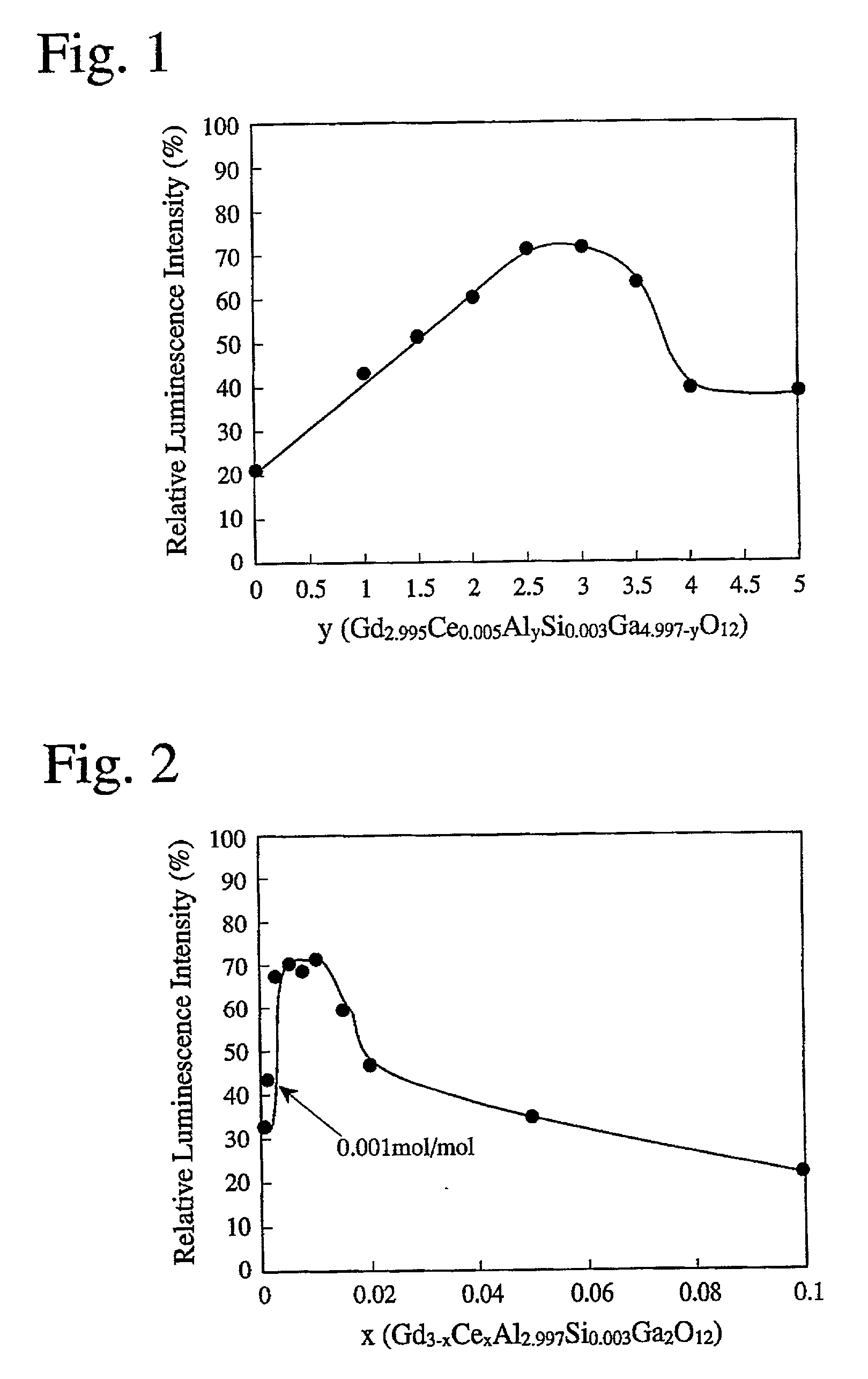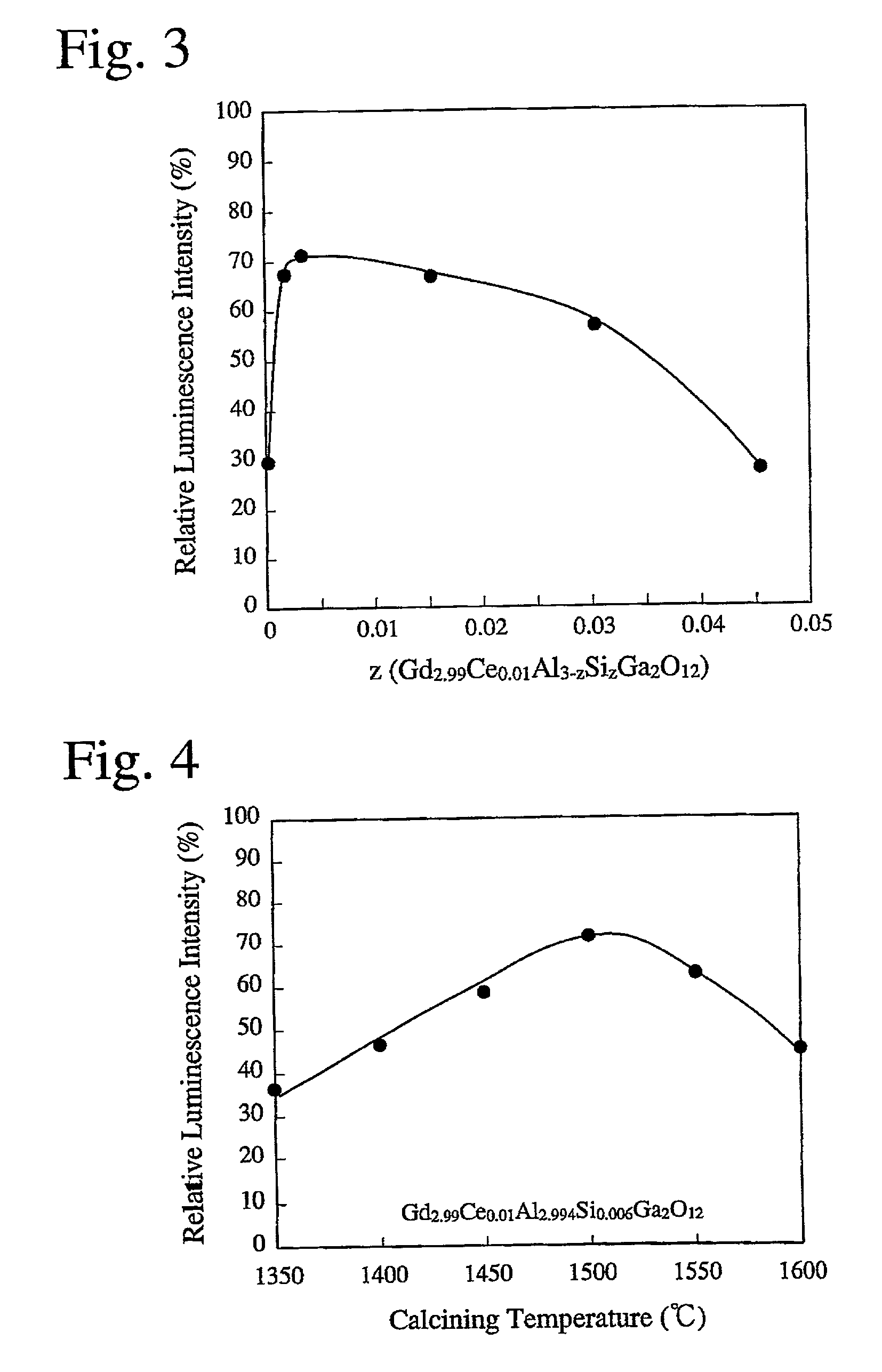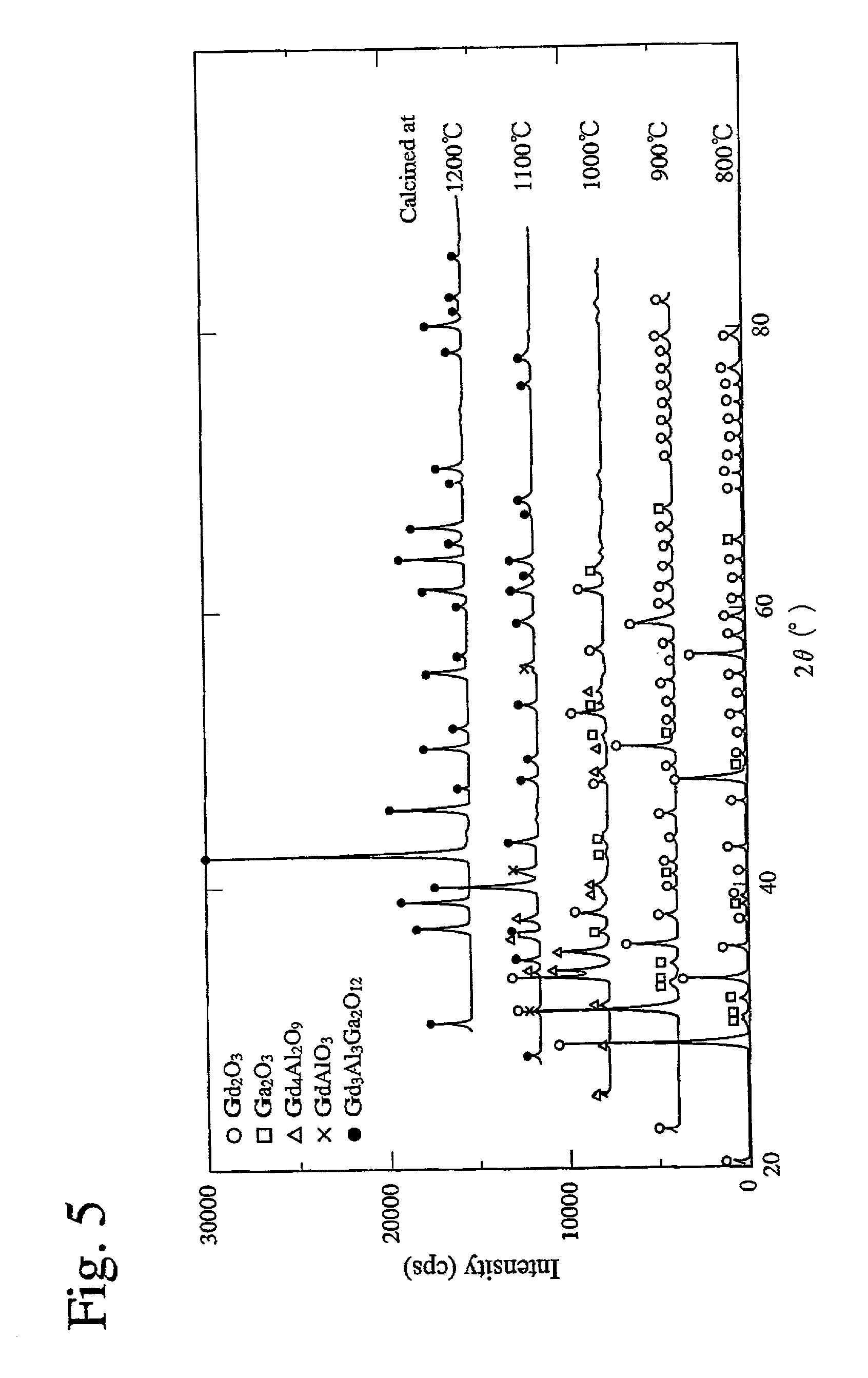Ceramics and their powder for scintillators, and method for producing same
a technology of scintillator and powder, which is applied in the direction of inorganic chemistry, crystal growth process, spectral modifier, etc., can solve the problems inability to easily work, and high toxic ions, and achieves small attenuation time constant and afterglow. , the effect of high luminescence intensity
- Summary
- Abstract
- Description
- Claims
- Application Information
AI Technical Summary
Benefits of technology
Problems solved by technology
Method used
Image
Examples
example 1
Comparative Examples 1-3
[0035] 135.48 g of Gd.sub.2O.sub.3, 0.883 g of Ce.sub.2(C.sub.2O.sub.4).su-b.3.multidot.9H.sub.2O, 38.16 g of Al.sub.2O.sub.3, 0.31 g of Si(OC.sub.2H.sub.5).sub.4, 50.61 g of Ga.sub.2O.sub.3, and 21.92 g of BaF.sub.2 were wet-mixed by a ball mill and dried. The resultant mixed powder was charged into an alumina crucible of a B5 size with an alumina lid, and calcined at 1500.degree. C. for 2 hours. After cooling, the calcined mixture was disintegrated, washed with 4N-hydrochloric acid for 2 hours with a stirrer, and then with pure water and dried. The mixture was ball-milled for 24 hours together with alumina balls of 5 mm in diameter (purity: 99.9%) in a polyethylene pot to provide pulverized scintillator powder of 0.7 .mu.m in average diameter. This powder was mixed with 5% by weight of pure water and then monoaxially pressed at pressure of 500 kg / cm.sup.2. It was then subjected to cold-isostatic pressing at pressure of 3 tons / cm.sup.2 to provide a green bod...
examples 2-8
Comparative Examples 4-7
[0043] Sintered bodies having compositions shown in Table 2 were produced in the same manner as in EXAMPLE 1 except for changing the percentages of Al.sub.2O.sub.3, ethyl silicate and Ga.sub.2O.sub.3, the calcining temperature and the sintering temperature. The diffusion transmittance, relative luminescence intensity, attenuation time constant and afterglow of each of the resultant ceramic scintillators are shown in Table 2. Those sintered in vacuum or in an atmosphere at less than 5.times.10.sup.4 Pa suffered from extreme evaporation of Ga, resulting in a relative density of less than 90%.
2TABLE 2 Sintering HIP Diffusion Relative Attenuation Afterglow Temp. Temp. Transmittance Luminescence Time After No. Composition (.degree. C.) (.degree. C.) at 550 nm (%) Intensity (%) Constant (.mu.s) 30 ms (%) EX. 1 Gd.sub.2.99Ce.sub.0.01Al.sub.2.994Si.sub.0.006Ga.sub.2O.sub.12 1700 1500 65 180 <1 0.01 EX. 2 Gd.sub.2.99Ce.sub.0.01Al.sub.0.997Si.sub.0-.003Ga.sub.4O.sub.12...
PUM
| Property | Measurement | Unit |
|---|---|---|
| temperature | aaaaa | aaaaa |
| diameter | aaaaa | aaaaa |
| temperature | aaaaa | aaaaa |
Abstract
Description
Claims
Application Information
 Login to View More
Login to View More - R&D
- Intellectual Property
- Life Sciences
- Materials
- Tech Scout
- Unparalleled Data Quality
- Higher Quality Content
- 60% Fewer Hallucinations
Browse by: Latest US Patents, China's latest patents, Technical Efficacy Thesaurus, Application Domain, Technology Topic, Popular Technical Reports.
© 2025 PatSnap. All rights reserved.Legal|Privacy policy|Modern Slavery Act Transparency Statement|Sitemap|About US| Contact US: help@patsnap.com



